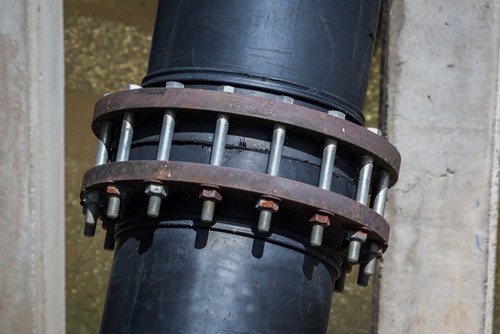Shell and tube heat exchangers are essential to safe, efficient processing—and leaks are never part of the plan. Whether you’re working in food and beverage, chemical, or pharmaceutical manufacturing, even a small leak can trigger big problems: lost productivity, product contamination, environmental hazards, or fire risk.
One common place where leaks show up? The flanges.
Understanding what causes flange leaks—and how to fix them—can help you protect your equipment, your team, and your bottom line.
First, What Is a Flange?
Flanges are the connection points where parts of a heat exchanger are joined together. Each flange includes:
-
A metal ring (flange face)
-
A gasket for sealing
-
Bolts that hold everything in place
When leaks occur at the flange, the gasket is often blamed—but it’s not always the sole culprit. Let’s look at three common causes of flange leaks and how to resolve them.
1. Thermal Stress & Flange Distortion
Heat exchangers are built to handle wide temperature swings—but extreme temperature differentials can still cause metal parts to expand and contract at different rates, leading to flange warping or misalignment. If the differential exceeds around 110°C (230°F), extra precautions should be taken during design or maintenance.
How to prevent distortion-related leaks:
-
Increase flange and tube sheet thickness
-
Use more conservative stress values in calculations
-
Lower the allowable flange rigidity index
-
Increase the bolt ratio to 120% of the design value and run full bolt-load analysis
Working with a heat exchanger manufacturer who understands your application’s thermal profile is key to preventing temperature-induced failures from the start.
2. Loose or Improperly Torqued Bolts
Heat, vibration, and pressure can all cause bolts to loosen over time—leading to loss of gasket compression and eventual leaks. Retightening bolts is a start, but doing it incorrectly or too frequently may mask a larger issue.
Best practices:
-
Use proper torquing techniques: hot torquing or hydraulic tensioning are more effective than manual tightening.
-
Check for excessive paint on bolts: degraded coatings can reduce bolt load over time.
-
Ensure the design supports proper load distribution and stress handling.
If your flange bolts keep loosening no matter how often you tighten them, you might need to reassess the mechanical design or use hardware that can absorb thermal expansion and pressure cycles better.
3. Inadequate Hardware or Gasket Design
Persistent leaks—even after proper bolt torquing—may indicate a deeper issue with your gasket or hardware setup.
Two effective solutions:
- Disc spring washers: These help maintain constant bolt load despite thermal expansion and contraction
- Weld ring gaskets: These reinforced gaskets are welded in place, keeping the sealing material contained and preventing deformation or scuffing caused by movement
These types of upgrades help maintain seal integrity over time, especially in systems that see repeated thermal cycling or vibration.
Don’t Ignore the Signs of a Flange Leak
Whether your system is brand new or has been running for years, a flange leak should never be brushed off. It’s often a warning sign of a larger issue—whether it’s stress, improper assembly, or a need for a more robust design.
At Enerquip Thermal Solutions, we’re here to help. Our engineers can review your heat exchanger configuration, identify the root cause of recurring leaks, and recommend the best path forward—whether it’s replacement parts, design tweaks, or new equipment.
Contact us today to troubleshoot flange leaks and keep your system running safely and efficiently.

